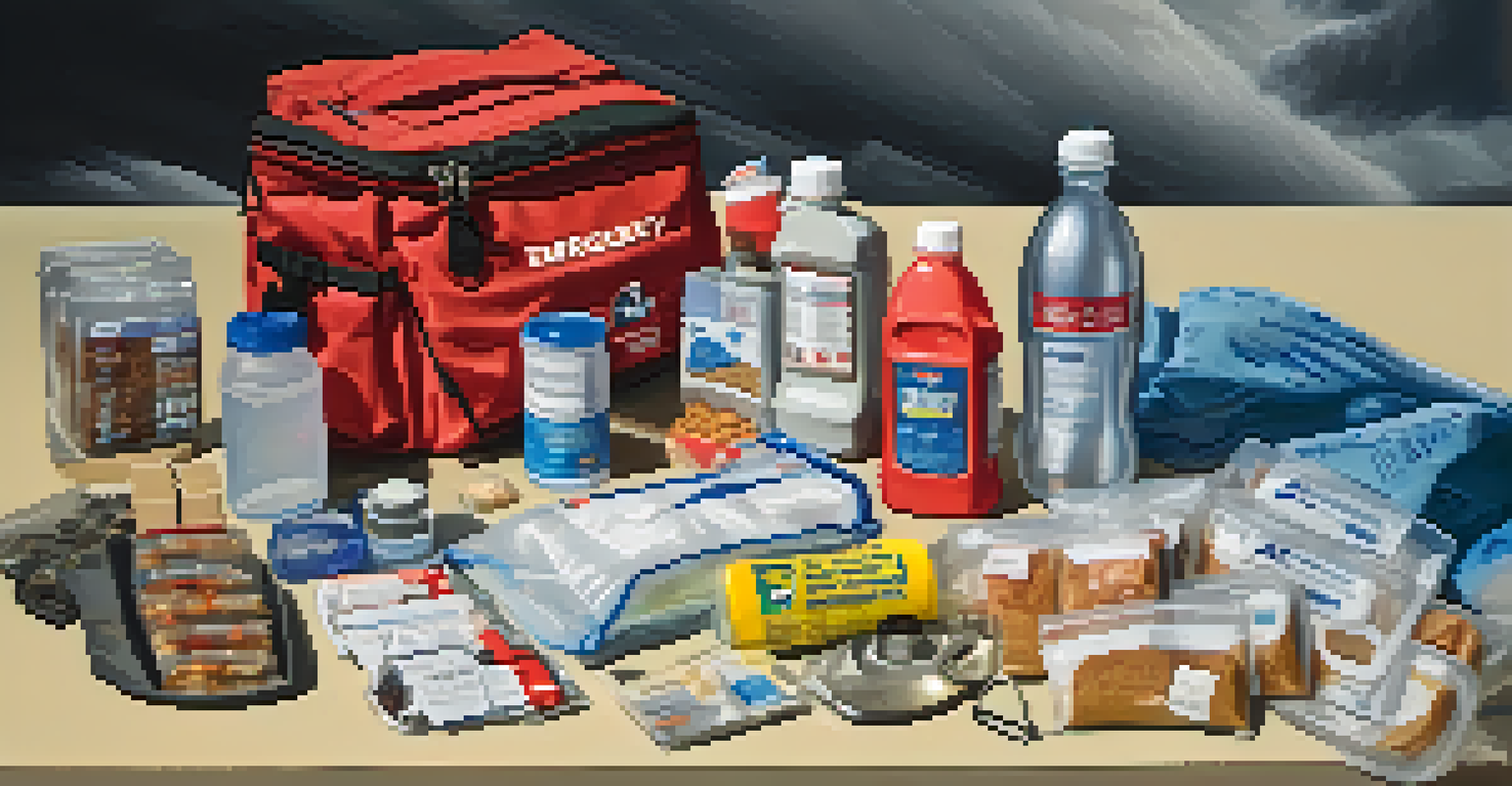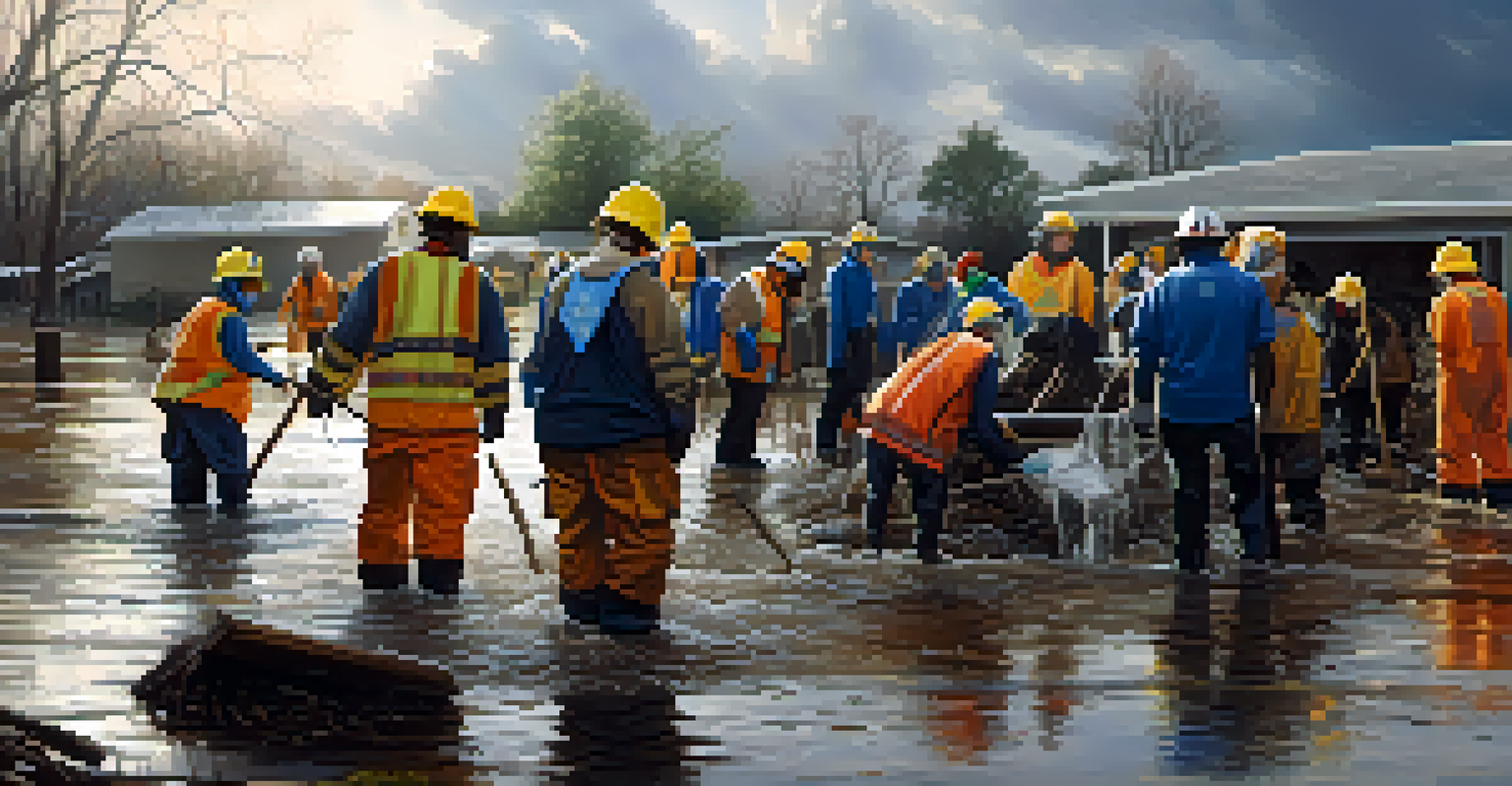Personal Safety Tips for Surviving Flood Emergencies

Understand Flood Risks and Alerts in Your Area
The first step in preparing for a flood is understanding the risks in your area. Different regions have different levels of flood susceptibility based on geography and weather patterns. Keeping an eye on local weather forecasts and flood alerts can help you stay informed and ready for any potential flooding.
Preparation through education is less expensive than learning through tragedy.
You can sign up for alert systems that notify you of severe weather warnings. This proactive approach ensures you won’t be caught off guard when a flood warning is issued. Remember, being informed is your first line of defense.
Additionally, familiarize yourself with the flood zones in your community. Knowing whether you live in a high-risk area can help you plan your safety measures more effectively.
Create an Emergency Plan with Your Family
Having a well-thought-out emergency plan can make all the difference during a flood. Gather your family and discuss how you will respond if a flood warning is issued. Make sure everyone knows the safest routes to higher ground and the location of emergency supplies.

Assign roles to each family member, especially children, to ensure everyone feels involved and responsible. This not only empowers them but also helps in executing the plan more smoothly during an emergency.
Understand Local Flood Risks
Being aware of your area's flood risks and alert systems is crucial for preparedness.
Regularly practicing this plan can help your family stay calm and collected in the chaos of a flood. Revisit and update your plan periodically to adapt to any changes in your circumstances.
Prepare an Emergency Kit for Flood Situations
An emergency kit is essential for any disaster, including floods. Start by gathering supplies such as non-perishable food, water, flashlights, first-aid supplies, and important documents. Having these items readily available can save precious time and ensure your safety.
In the midst of chaos, there is also opportunity.
Don’t forget to include essential items for pets if you have them. Keeping their food, medications, and comfort items in your kit will help reduce their stress during a crisis.
Store your emergency kit in a waterproof container and check it regularly to ensure nothing has expired. This way, you’ll be ready to go when the time comes.
Know When to Evacuate: Stay Alert and Ready
Knowing when to evacuate is crucial during a flood emergency. If local authorities issue an evacuation order, take it seriously and act promptly. Delaying your departure can put you and your family at risk as roads may quickly become impassable.
Listen to local news and radio stations for updates on the situation. Social media can also be a useful tool to receive real-time information from emergency management agencies.
Create a Family Emergency Plan
A well-thought-out emergency plan ensures your family knows how to respond effectively during a flood.
Always have a backup route in mind, as primary roads might be closed due to flooding. Being prepared to leave quickly can be vital to your safety.
Stay Informed During Flood Emergencies
Staying informed during a flood is essential for your safety. Use a battery-operated or hand-crank radio to receive updates if power goes out. This ensures you have access to critical information, even when other sources fail.
Social media platforms can also provide timely updates, but always verify the information from reliable sources. Misinformation can lead to confusion and poor decision-making during emergencies.
Consider downloading emergency apps that provide alerts and updates about floods in your area. Being informed allows you to make better decisions for your safety.
Avoid Flood Waters: Stay Safe and Smart
One of the biggest dangers during a flood is the water itself. Even a small amount of floodwater can be incredibly powerful and swift, posing serious risks. Avoid walking or driving through flooded areas, as you may not know what's lurking beneath the surface.
Remember that floodwaters can contain hazardous materials, debris, and even wildlife. It’s better to be safe and find alternate routes rather than risking your safety.
Stay Informed and Safe
Staying updated during a flood emergency is vital for making informed decisions and ensuring safety.
If you find yourself trapped, seek higher ground and stay put until help arrives. It’s crucial to remain calm and wait for rescue rather than attempting to navigate through dangerous waters.
Stay Calm and Help Others Where Possible
In times of crisis, remaining calm can be challenging but is incredibly important. Panic can cloud judgment and lead to poor decisions. Take deep breaths and focus on your emergency plan to navigate the situation effectively.
If you’re in a position to help others, offer assistance to neighbors or those in need. Supporting one another can strengthen community bonds and create a sense of unity during tough times.

However, ensure your safety first before attempting to help others. Being in a safe position allows you to assist others more effectively and without putting yourself at risk.
Post-Flood Recovery: Assessing Damage and Moving Forward
After the floodwaters recede, the recovery process begins. Assessing the damage to your home and belongings is crucial. Take photos for insurance purposes and document any loss to streamline the claims process.
Be cautious when re-entering your home, as there may be hidden dangers such as structural damage or contaminated water. Wear protective gear to safeguard yourself against potential hazards.
Once you're safe and accounted for, focus on rebuilding and supporting your community. Recovery can be a long journey, but together, you can emerge stronger than before.